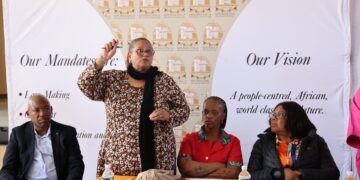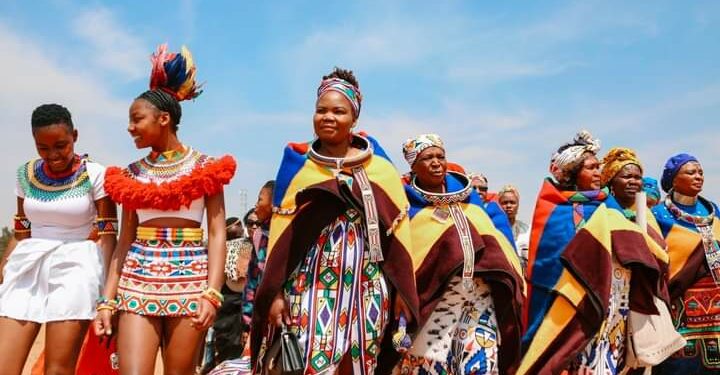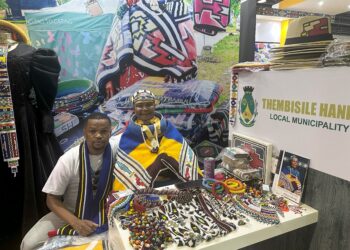PHOLA – A vibrant tapestry of colour, music, and dance filled the Mabande sports ground as the community came together to celebrate Heritage Day. This annual occasion is a heartfelt reminder for South Africans to embrace and honour the rich diversity of cultural traditions, languages, and customs that define the nation. Heritage Day is not just a celebration but a powerful platform for fostering solidarity and mutual respect among various ethnic groups, showcasing the strength found in unity. Hosted by the SoGutjhe Royal House, Kusile MaNdebele, the event drew community members, esteemed dignitaries, and passionate cultural enthusiasts, creating an unforgettable atmosphere of joy and pride.
The event was meticulously crafted to pay homage to and exhibit the mixture of cultures encompassed within the SoGutjhe community and beyond. The main point of the festivities was the stunning array of cultural performances by renowned artists such as uGatsheni, Dr Nothembi Mkhwebane, Dlaw’mbana, and SoNkingana, showcasing traditional music and dance forms. Local artists mesmerized the audience with melodious tunes sung in various indigenous languages, while the dancers adorned themselves in vibrant attire representing a myriad of ethnic groups.
These captivating performances not only entertained the attendees but also served as an enlightening platform to educate them on the profound significance of each culture’s contributions to South Africa’s rich national identity. In his moving address, Ndabezitha Sipho SoMbali Mahlangu highlighted the importance of safeguarding women and children against Gender-Based Violence (GBV) and fervently implored the community to persist in the battle against substance abuse. “As Traditional Leaders, let us leverage our influence across all platforms to aid our people. Let us not remain silent in anticipation of solutions; rather, let us collaboratively engage with the government to triumph,” Mahlangu urged.
The Ndebele community adorned themselves in traditional attire characterised by intricate geometric patterns. Women adorned themselves with colourful beaded necklaces, ornate headdresses, and aprons embellished with meticulously painted designs, while men sported shirts and pants decked with similar geometric motifs. The Sotho community’s traditional attire comprised a draped blanket over the shoulder, a stylish headwrap or hat, and exquisitely embroidered or beaded dresses for women. Men donned traditional Basotho hats, draped themselves in blankets, and wore clothing embellished with intricate patterns and embroidery.
Among the esteemed stakeholders present were Mwelase Mining, Siyanqoba ngamandla, Sinawe Security, Siyaphusha, Thungela, Africoal, Me Alone, MNG Industries, Gundo, Ngekhaya Cleaning Services, and Vlakfontein Mine. The festivities concluded with a delectable spread of traditional cuisine, including tripe, morogo, samp, skopo, and phuthu.























